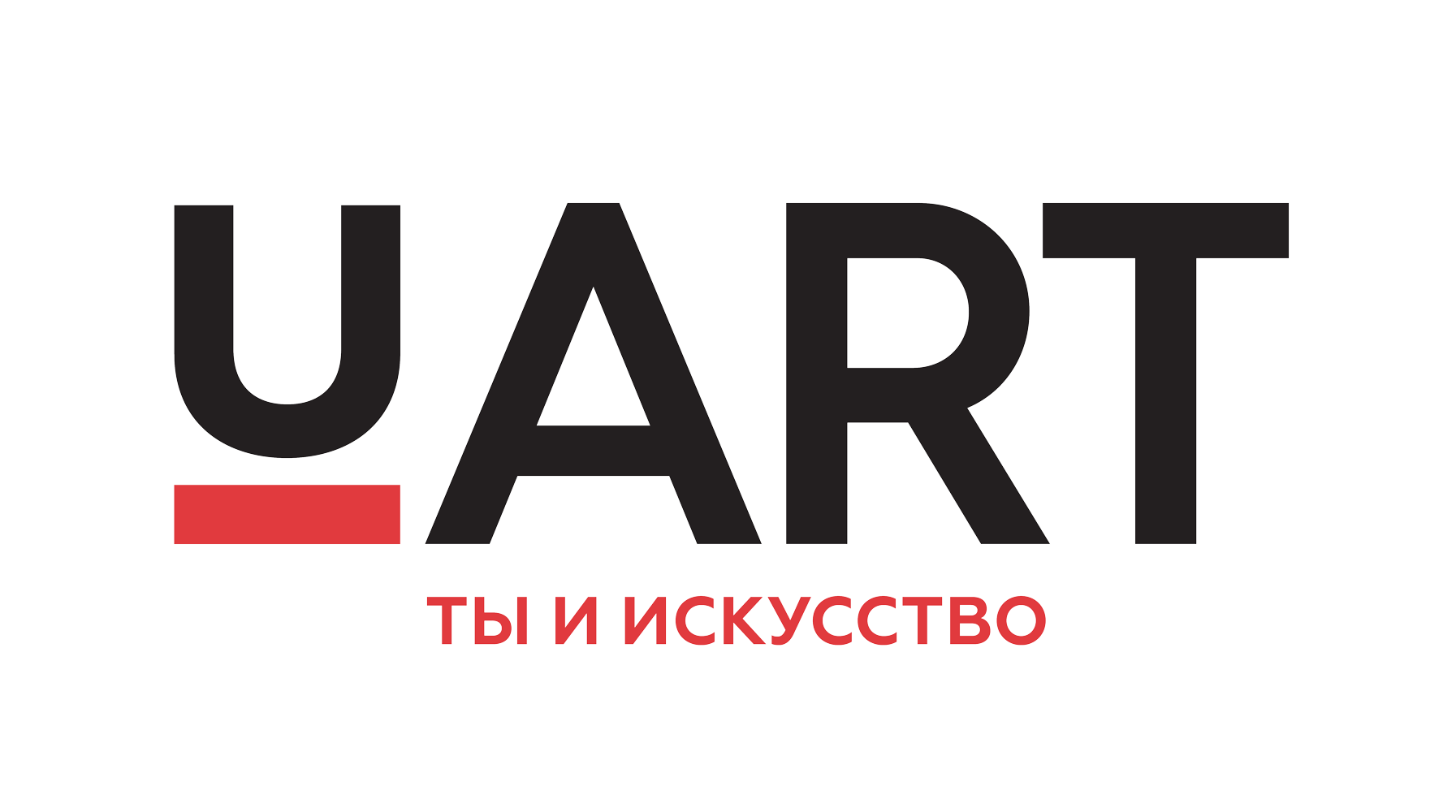Hommage
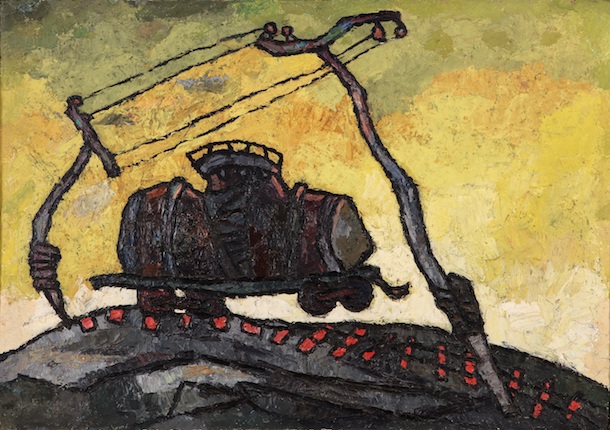
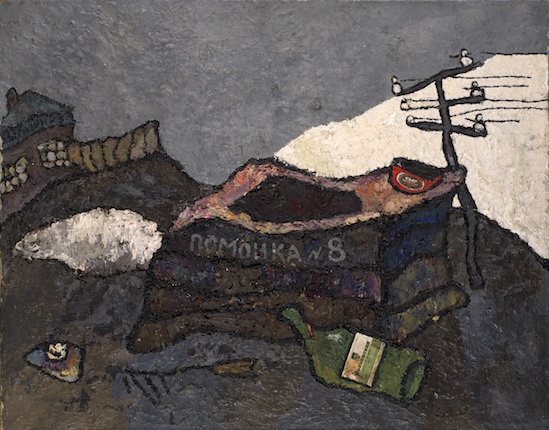
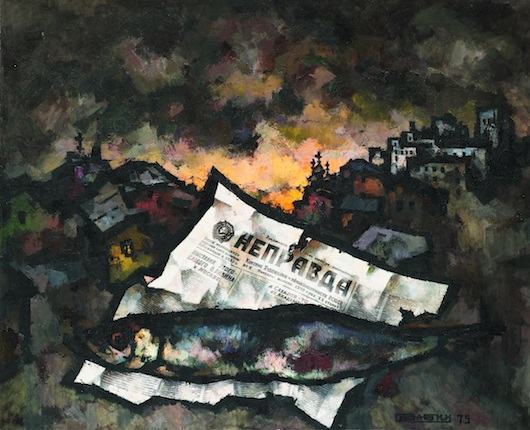
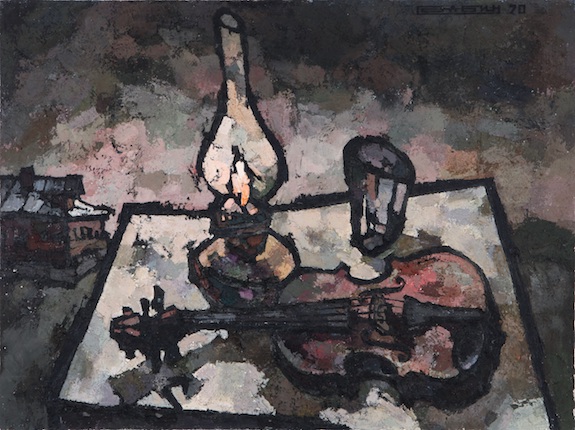
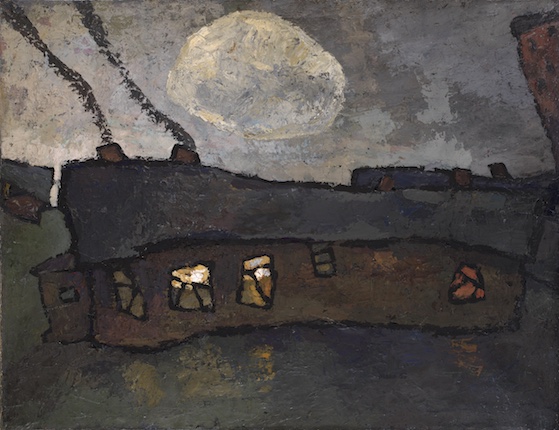

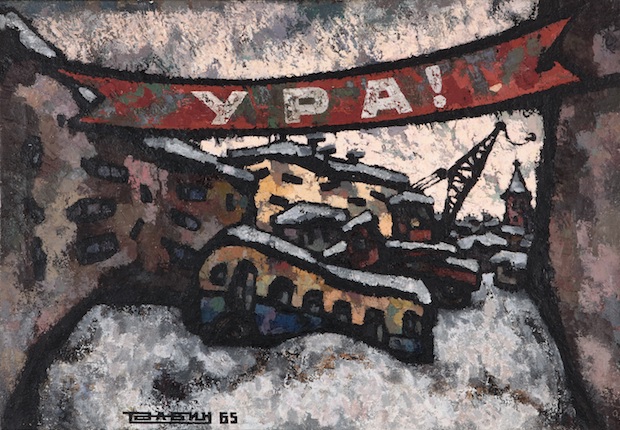
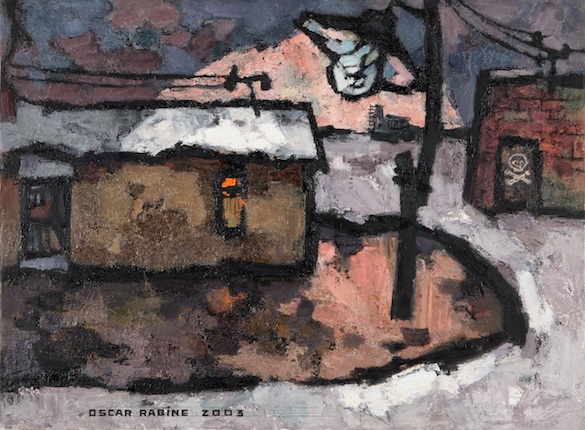
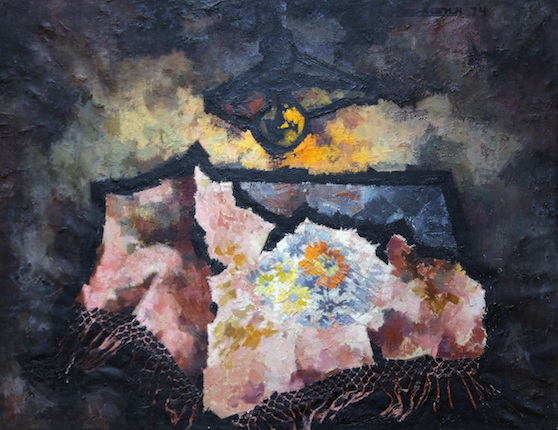
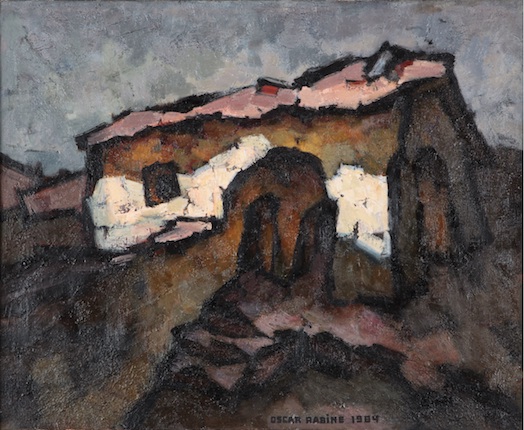
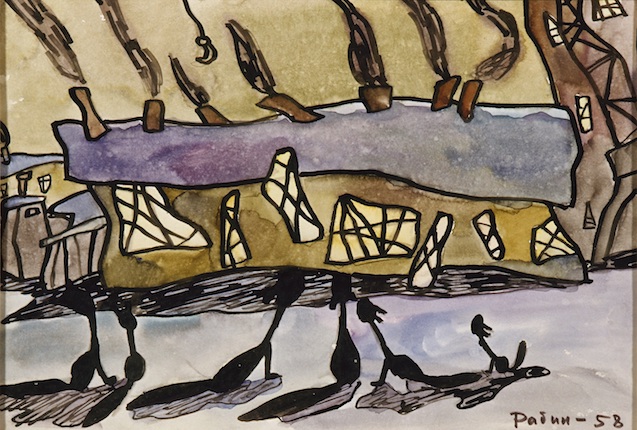
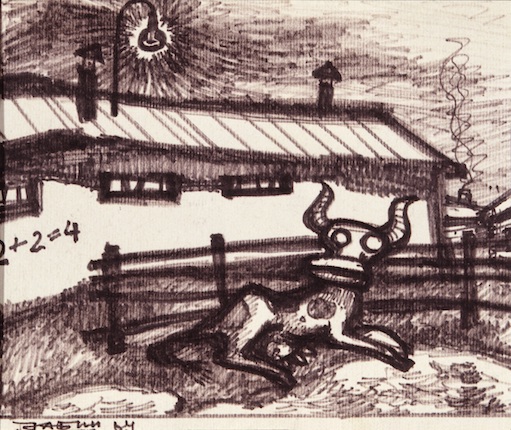
Oskar Rabin. Tank. 1957. The collection of Iveta and Tamaz Manasherov
Oskar Rabin. Pomoika No. 8. 1958. The collection of the Tsukanov Family Foundation
Oskar Rabin. Nepravada. 1975. The collection of the Tsukanov Family Foundation
Oskar Rabin. Violin, lamp and glass. 1970. The collection of Iveta and Tamaz Manasherov
Oskar Rabin. Barak with Moon. 1959. The collection of the Tsukanov Family Foundation
Oscar Rabin. Barrack with Newspapers. 1969. The collection of Iveta and Tamaz Manasherov
Oscar Rabin. ‘HURRAH!’. 1965. The collection of Eric Baghdasaryan
Oscar Rabin. Barrack and lamp. 2003. The collection of Iveta and Tamaz Manasherov
Oskar Rabin. Lamp and shawl. 1974. The collection of Iveta and Tamaz Manasherov
Oscar Rabin. Chapel in Provence. 1984. The collection of Iveta and Tamaz Manasherov
Oscar Rabin. Cats in front of a barrack. 1958. The collection of Alexander Kronik
Oscar Rabin. 2 х 2 = 4 (Cow at the fence). 1964. The collection of Alexander Kronik
Moscow, 19.12.2018—17.02.2019
exhibition is over
Share with friends
For the press
Oscar Rabin
Hommage
Curator: Olga Sviblova
With the support of: U-ART, Tsukanov Family Foundation
The Multimedia Art Museum, Moscow, the U-ART Foundation of Iveta and Tamaz Manasherov and the Tsukanov Family Foundation present an exhibition — ‘Oscar Rabin. Hommage’. The exhibition opens on December 18, on the 40th day after the passing of the patriarch of the Russian underground and classic of Russian modern art Oscar Rabin (1928–2018).
Oscar Rabin was born in Moscow in 1928 into a family of doctors. His father and mother — a Ukrainian Jew, Yakov Rabin, and a Latvian, Veronika Anderman — were graduates of Zurich University. At the age of 13, the boy was orphaned. Painting for Rabin was his only joy. In 1942, he enrolled at the arts studio at the House of Pioneers, which was led by the renowned artist Yevgeny Kropivnitsky. It was a meeting that was to have a fateful influence on his life. Kropivnitsky and his wife, the artist Olga Potapova, took Oscar Rabin into their family, which lived in a barrack hut in the Moscow region village of Lianozovo.
In 1946–1948, Oscar Rabin studied at the Arts Academy in Riga, and in 1948 he enrolled at the Surikov Moscow State Academic Arts Institute, from which he was expelled in 1949 ‘for formalism’. Soon after, Oscar Rabin married Yevgeny Kropivnitsky’s daughter, Valentina. They moved into one of the barrack huts in Lianozovo, not far from the railway lines. The barrack was to become one of the centers of artistic and intellectual life in the Moscow underground, bringing together artists and poets, including Yevgeny and Lev Kropivnitsky, Nikolay Vechtomov, Lidia Masterkova, Vladimir Nemukhin, Genrikh Sapgir, Igor Kholin, Yan Satunovsky and others. It was from this friendly, almost family circle that a phenomenon developed that would be titled ‘the Lianozovo School’.
From 1958, Oscar Rabin’s barrack studio in Lianozovo was not only open to his close circle of family and supporters, it was open to all. The ‘open days’ in Lianozovo were the result of an effort among young artists to show their work to a wider public, riding the wave of the Khruschev ‘Thaw’ and the drawing back of the ‘Iron Curtain’. The studio in Lianozovo became a site of pilgrimage, visitors including journalists, diplomats and collectors. The reaction of the authorities came in 1960 in the form of a satirical article in the Moskovsky Komsomolets newspaper headlined ‘Priests of Garbage Dump No. 8’.
Oscar Rabin’s artistic style had already formed in his youth. His nervous, expressive, fragmenting plastic language which intensely brings the composition together, allowing for collage insertions, assemblies and surrealist elements, was used by Rabin in order to realistically depict the world that surrounded him. ‘I paint what I see. I lived in a barrack, many Soviet citizens were also living in barracks, and still do so today. Now I’ve moved into a panel-built block and I paint the blocks of panel-built houses that surround me’, Rabin later recalled.
Oscar Rabin’s works don’t just reflect the external surrounding world, they also describe the space of internal feelings within which the personal experience of an orphan’s wanderings without documents in a world in which a person doesn’t exist without identity documents, had an influence on motifs that are often employed by Rabin in his works, such as a passport or visa. They often appear as documentary collage insertions in his landscapes or still lifes.
Like all artists, Rabin wanted the opportunity to show his works to the general public. In 1957, having passed the exhibition committee censors, he managed to show one work at an exhibition being held to coincide with the International Festival of Youth and Students in Moscow. Nevertheless, after that, the doors to the Union of Artists — the only opportunity to exist publicly for a Soviet artist — were closed. In the meantime, Rabin was acquiring collectors, first and foremost the great Georgy Kostaki, thanks to whom a priceless legacy of Russian avant garde art was lovingly collected and preserved. It was as a result of this that the new Post-War generation of young artists of unofficial culture were able to learn about the Russian artistic heritage and gain moral and material support for their own work (Anatoly Zverev, Vladimir Yankilevsky and others).
Decades existing in the artistic underground forced Rabin to become a coordinator of the notorious ‘Bulldozer Exhibition’ of 1974. Rabin, his son Alexander Rabin, Vitaly Komar, Alexander Melamid, Mikhail Roshal, Nadezhda Elskaya, Lidia Masterkova, Vladimir Nemukhin, Yevgeny Rukhin, Vasily Sitnikov, Igor Kholin and other artists decided to show their pictures ‘in the fresh air’ on a patch of wasteland in Belyayevo on the outskirts of Moscow. The exhibition was destroyed by members of the security services with the aid of street-cleaning vehicles and bulldozers, which ground the artists’ works into the dirt. The breaking up of the exhibition gained a huge amount of coverage in the media internationally. As a result, two weeks later, on September 29, 1974, the artists were allowed to show their works in Izmailovsky Park. Over 40 artists for four hours presented their experimental works to thousands of spectators. Nevertheless, the legalization of unofficial art would only start at the end of the 1980s.
In 1977, a campaign of harassment was unleashed in the Soviet Union against Rabin, and he was prosecuted for ‘social parasitism’. In 1978, he was allowed to travel to France with his family on a visitor’s visa, although he was soon after deprived of his Soviet citizenship in his absence. Thus, he found himself in enforced emigration in Paris, where he lived and worked for the remaining 50 years of his life. It was only in 2006, by a decree of the President of the Russian Federation, that the ambassador of the Russian Federation in France officially presented Rabin with a Russian passport.
Rabin began his international exhibition career in the 1960s. In the 2000s, Rabin’s work was fully recognized by the largest Russian state art institutions and an entire generation of new Russian collectors.
In 2008, the Tretyakov Gallery hosted a major retrospective of Oscar Rabin’s work organized by the U-ART Fond of Iveta and Tamaz Manasherov. In 2013, the Multimedia Art Museum opened an exhibition titled ‘Oscar Rabin. Graphic Works, 1950s — 1960s’, to mark the artist’s 85th birthday. They included graphic works from the collection of Alexander Kronik and paintings from the collection of the Tsukanov Family Foundation.
The artist’s works can be found in the collections of the largest Russian and international museums: the Tretyakov Gallery (Moscow), the Russian Museum (St. Petersburg), the Georges Pompidou National Center of Art and Culture (Paris), where in 2016 the exhibition ‘Collection! Soviet Art in the USSR and Russia, 1950—2000’, comprising works given as a gift to the museum by the Vladimir Potanin Fund, major Russian collectors and Russian artists, was held with great success. A work by Oscar Rabin was given to the Georges Pompidou Center by the U-Art Fund of Iveta and Tamaz Manasherov.
The tragic, heroic life of Oscar Rabin, who lived through the death of his son and wife, ended in his 90th year, when he was preparing an exhibition of his works and works by his second wife, the artist Tatyana Lysak, in Florence.
The new Oscar Rabin exhibition at MAMM is a tribute to the art of this classic and a continuation of the MAMM program presenting the history of Russian modern art to a new generation of spectators. This is our attempt to ‘restore the link of time’. As part of the exhibition, in the museum’s cinema, films about the life and work of the artist will be shown: «Oscar» (directed by Yevgeny Tsymbal and Alexander Smolyansky); ‘Happy Trip’ (directed by Tatyana Pinskaya and Alexander Shatalov).
The exhibition features works from the collections of the State Tretyakov Gallery, the Tsukanov Family Foundation, the U-Art Foundation of Iveta and Tamaz Manasherov, Alexander Kronik, Elchin and Dilyara Safarov, Igor Markin, Mikhail Alshibai, Erik Bagdasaryan, Yeleina Lisina and Alexander Saprykin and Ivan Filonov. The Museum would like to thank Alexander Kronik for his assistance in the organization of the exhibition.

